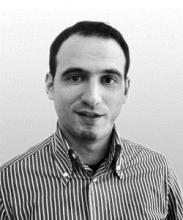Digital Image Processing

The course will consist of theoretical material introducing the mathematics of images and imaging, as well as homeworks designed to introduce methods of real-world data manipulation. Within the homework the students will learn how to implement methods for contrast enhancement, color correction, edge detection, visual features extraction, panorama stitching, image matching and similarity, key-point detection and matching, image classification.
# Digital Image Processing
# Overview
# Contents
The course will consist of theoretical material introducing the mathematics of images and imaging, as well as homeworks designed to introduce methods of real-world data manipulation. Within the homework the students will learn how to implement methods for contrast enhancement, color correction, edge detection, visual features extraction, panorama stitching, image matching and similarity, key-point detection and matching, image classification.
- Introduction to Python and OpenCV
- Introduction to digital image processing
- Basic operations on images: representation and digitization of images, viewing digital images, pixels, matrix transformations, scaling, translation and rotations
- Image histograms and point-based operations
- Color representation
- Linear filters and convolution
- Edge detection
- Image segmentation
- Morphological operations
- Contour extraction
- Frequency domain, power spectral density and FFT
- Key-point extraction and local visual features
- Content-based image retrieval
- Image classification
- Convolutional neural networks
# Outcomes
Upon the completion of the course the student is expected to rule and use the basic tools and methods for image processing.
# Methods
Lectures using presentations, interactive lectures, exercises (using equipment and software packages), teamwork, case studies, invited guest lecturers, independent preparation and defense of a project assignment and seminar work.
| Type | Effort [h] |
|---|---|
| Lectures | 30 |
| Exercises | 45 |
| Project Tasks | 15 |
| Home Learning | 90 |
# Materials
| Author | Title | Publisher | Year |
|---|---|---|---|
| Rafael C. Gonzalez, Richard E. Woods | Digital Image Processing (4th Edition) | Pearson | 2017 |
| Prateek Joshi | OpenCV with Python By Example | Packt Publishing | 2015 |
# Assessment
Grades will be based on homeworks (five in total), final exam or final project.
# Example Assignment
Within the homework the students will learn how to implement methods for contrast enhancement, color correction, edge detection, visual features extraction, panorama stitching, image matching and similarity, key-point detection and matching, image classification.
# Final Project
Gesture-based user interface: Implement an automatic face and hand gesture recognition system which is able to control computer media player. Hand gestures and the human face are the key elements to interact with the smart system. Use face recognition for viewer verification and hand gesture recognition to control the computer media player, for instance, volume down/up, next music, stop, pause and etc.
# Methods
| Type | Points/Percent |
|---|---|
| Project or final exam | 50 points |
| Home work | 50 points |
# Criteria
| Grade | Grade (letter) | Scale |
|---|---|---|
| 5 | F | up to 50 points |
| 6 | E | 51 to 60 points |
| 7 | D | 61 to 70 points |
| 8 | C | 71 to 80 points |
| 9 | B | 81 to 90 points |
| 10 | A | 91 to 100 points |
# Requirements
# Skills
- Discrete Mathematics
# Equipment
N/A


